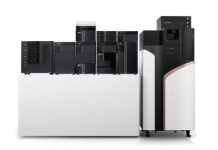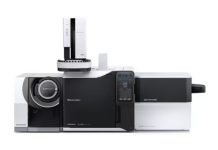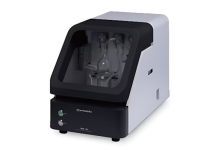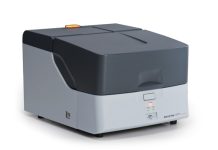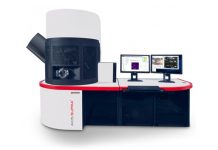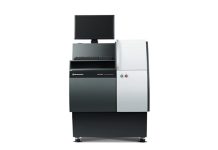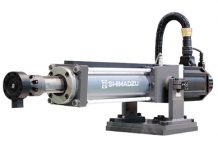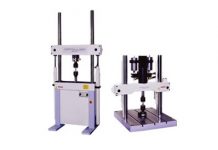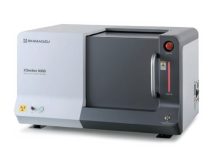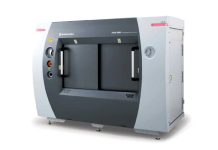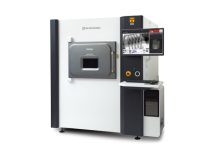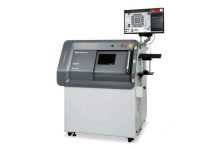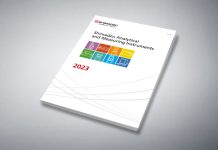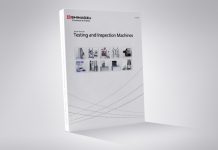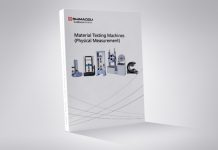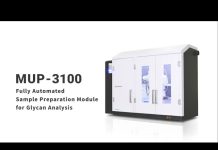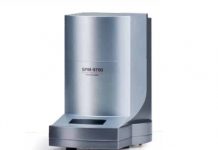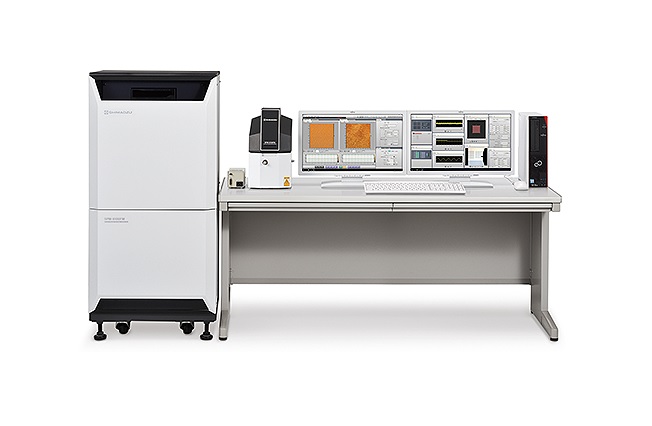
See the Nano World Come to Life
The new HR-SPM scanning probe microscope uses frequency detection.
his instrument is not only capable of ultra-high resolution observations in air or liquids, but for the first time enables observations of hydration/solvation layers at solid-liquid interfaces.
Existing SPMs (scanning probe microscopes) and AFMs (atomic force microscopes) generally use AM (amplitude modulation). In principle however, the FM (frequency modulation) measurement method enables higher imaging resolution.
| SPM | : | Scanning Probe Microscope |
| AFM | : | Atomic Force Microscope |
| AM | : | Amplitude Modulation |
| FM | : | Frequency Modulation |
High Resolution
- Uses the FM-AFM method
- Noise in air and liquids is reduced to 1/20th that of existing methods.
- Achieves the performance level of a vacuum-type SPM, even in air and liquids!
Improved Usability
- The installation of the HT scanner has expanded the observation area and increased speed.
- Dual monitors and signal capabilities greater flexibility
Atomic Resolution Observations in Solution
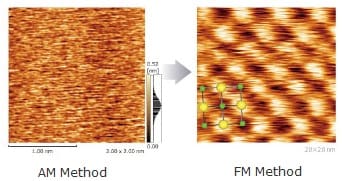
Observations were made of the arrangement of atoms on a NaCl surface in a saturated aqueous solution. Atoms hidden by noise in existing AFM observations (AM method, left) are clearly visible when the FM method (right) is used. The FM method provides true atomic resolution.
Pt Catalyst Particles Observation in Air
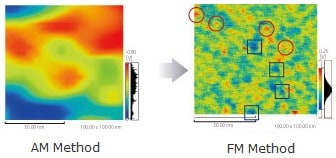
Pt catalyst particles in a TiO2 substrate were identified, and the surface potential was measured using a KPFM. Pt particles several nm in size were observed in the exchange of charges with the substrate. In the figure on the right, the red circles indicate positive potential, and the blue circles indicate negative potential. It is evident that the resolution has been dramatically improved, even for a KPFM.
Note: KPFM functionality is available on a special order basis.
Cited References
- Ryohei Kokawa, Masahiro Ohta, Akira Sasahara, Hiroshi Onishi, Kelvin Probe Force Microscopy Study of a Pt/TiO2 Catalyst Model Placed in an Atmospheric Pressure of N2 Environment, Chemistry – An Asian Journal, 7, 1251-1255 (2012).


